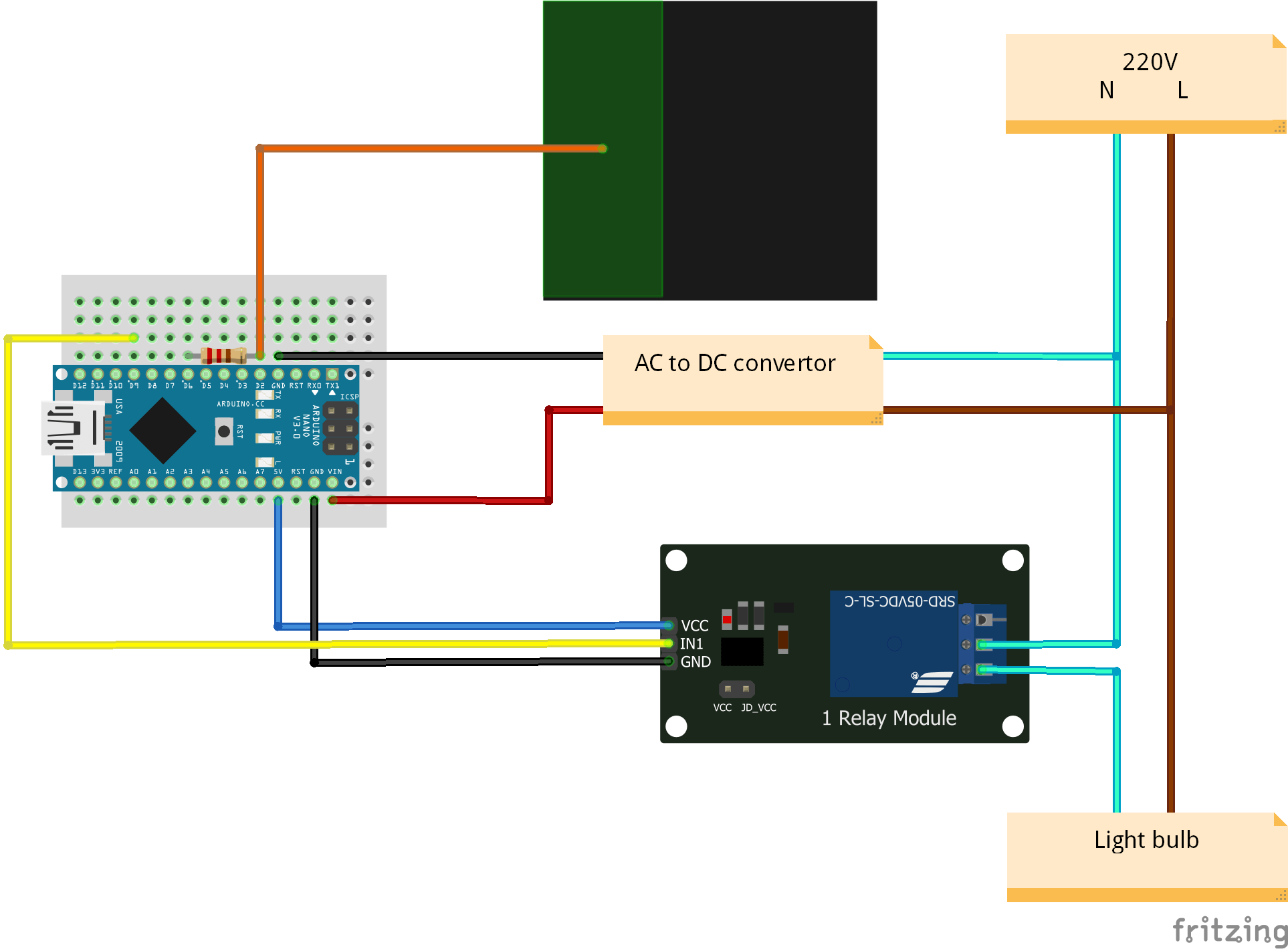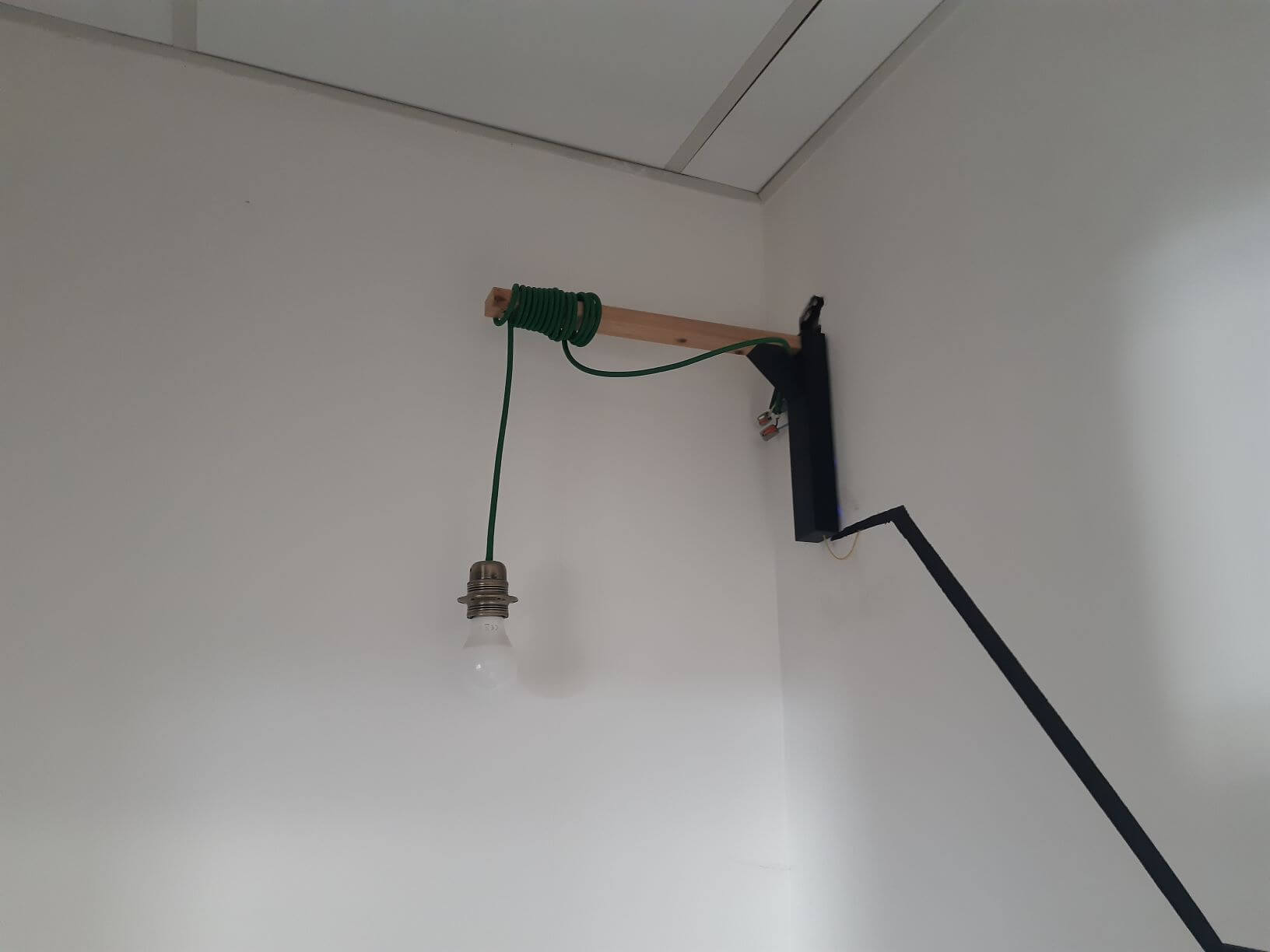Uma das aplicações dos sensores capacitivos é a criação de um interrutor tátil para acender uma lâmpada, por exemplo. Neste projeto, vamos conceber um sensor capacitivo com o Arduino que vamos utilizar como interrutor tátil para ligar e desligar uma lâmpada.
Hardware
- Arduino Nano
- Resistência de 10M Ohm
- Relé
- fio elétrico ou material condutor
- Conversor AC
Esquema elétrico

Atenção: este projeto utiliza 220V. Tome as precauções necessárias para evitar eletrocussão.
Código
Para criar um sensor capacitivo, utilizamos a biblioteca CapacitiveSensor. Quando o sensor capacitivo muda de estado, modificamos o estado enviado ao relé para abrir ou fechar o circuito.
#include <CapacitiveSensor.h> #define DEBUG 0 //Capacitive sensor CapacitiveSensor cs_6_2 = CapacitiveSensor(6, 2); // 10M resistor between pins 6 & 2, pin 2 is sensor pin, add a wire and or foil if desired const int sensitivity = 50; long val; //Light const int lightPin = 9; bool lightState = false; bool btnState = false, oldState = false; //smooth long smoothval, total; const int numReadings = 3; long readings[numReadings] = {0}; int readIndex; long threshVal=500; void setup() { pinMode(lightPin, OUTPUT); cs_6_2.set_CS_AutocaL_Millis(0xFFFFFFFF); // turn off autocalibrate on channel 1 - just as an example Serial.begin(9600); Serial.println("Touchless lamp initialized"); delay(2000); for (int i = 0; i < numReadings; i++) { val = cs_6_2.capacitiveSensor(sensitivity);// increase for hi smoothval = smooth(val); } } void loop() { val = cs_6_2.capacitiveSensor(sensitivity);// increase for hi smoothval = smooth(val); if (DEBUG) { //Serial.print(millis() - timeStart); // check on performance in milliseconds Serial.print("\t"); // tab character for debug window spacing Serial.print(val); // print sensor output 1 Serial.print("\t"); Serial.print(smoothval); // print sensor smooth output Serial.println(); // print sensor smooth output } // condition if (btnState == false && smoothval > threshVal) { btnState = true; } if (btnState == true && smoothval <= threshVal*0.8) { btnState = false; } if (oldState != btnState) { if (oldState == false) { lightState = !lightState; } digitalWrite(lightPin, lightState); delay(200); } oldState = btnState; delay(100); // arbitrary delay to limit data to serial port } long smooth(long val) { /* function smooth */ ////Write data on device long average; // subtract the last reading: total = total - readings[readIndex]; // read from the sensor: readings[readIndex] = val;//cs.capacitiveSensor(sensitivity); // add the reading to the total: total = total + readings[readIndex]; // advance to the next position in the array: readIndex = readIndex + 1; // if we're at the end of the array... if (readIndex >= numReadings) { // ...wrap around to the beginning: readIndex = 0; } // calculate the average: average = total / numReadings; // send it to the computer as ASCII digits return average; }
Resultados
Quando aproxima a sua mão do fio que funciona como interrutor tátil, a lâmpada deve acender-se ou apagar-se. Cabe-lhe a si ajustar a sensibilidade do sensor, a resistência e o valor limite (threshVal) para obter o comportamento desejado.
Próximas etapas
- Melhorar a robustez do sensor capacitivo face a perturbações externas
- Adicionar uma função para desligar a lâmpada automaticamente após um determinado período de tempo
